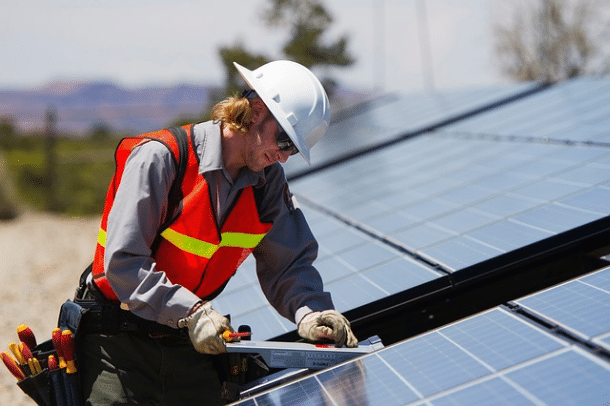
Pre-Commissioning test for your solar rooftop system should be carefully done so that the system installation is ensured safe. There are 3 major aspects for pre-commissioning tests for your solar panels.
- Operability test on isolation device
- Unintentional islanding functionality
- Cease to energize functionality
Apart from above test, it is important that the pre-commissioning test is performed on written procedure as per the equipment supplier’s guideline. A visual inspection should also be carried out so that all the earthing and safety features are checked as per the standard regulation. The visual inspection should be performed in the presence of the isolation device as required by the standard/regulation. Here are the list of pre-commissioning tests to be conducted for a rooftop solar PV system.
| Sr. No. | Item type | Remarks |
| 1 | Capacity of installed system | Check AC capacity that is equal to Inverter capacity. The solar array capacity can be same or higher |
| 2 | Installation Layout – is it as per drawing? | This will confirm the locations of all protective features and it also rechecks the capacity installed is as per approved capacity. |
| 3 | Inverter IS / IEC standards qualified | Check applicability of each certificate to actual model as used in the system and the validity of all such certificates |
| 4 | PV panel IS / IEC standards qualified | Check applicability of each certificate to actual model as used in the system and the validity of all such certificates |
| 5 | PV isolators / PV cables IS / IEC standards qualified | Check applicability of each certificate to actual model as used in the system and the validity of all such certificates |
| 6 | String level and cumulative protections are provided for over-current and surges | Over current protection (OCP) needs to be checked for its specifications, locations and standards. OCP needs to be installed for each string and also for each combination of strings. The capacity of OCP fuse needs to be 1.56 times the short circuit current of the string or string combination, depending on where this OCP is located. |
| 7 | Surge protections are provided at all specific locations in the system. | Surge protection devices (SPD) need to be provided on DC side in AJB / SCB / DCDB and on AC side in ACDB / Grid interface panel, if not in-built in inverter on either side. The type of SPD to be used depends on inverter and also on distance between solar array and lightning arrestor. Normally, these will be Type 2 SPDs. |
| 8 | DC side isolator switch between solar array and inverter | It is essential to have facility to disconnect DC side from the inverter in case inverter needs to be worked upon during day time. Solar array would be energized and only by operating disconnect switch one can safely work on inverter. |
| 9 | AC disconnect manual switch provided with locking arrangement | AC side isolator needs to be installed before interconnection point and access to this disconnector / switch should be free to Discom personnel. It should be possible to easily isolate complete system from the grid in case of grid line maintenance or fault or possible accident to the grid. |
| 10 | Meters approved by concerned authority | If consumer has procured net meter and solar meter, it is mandatory that these meters are tested and certified by Discom meter testing laboratory. It should be checked whether installed meters are certified and sealed. |
| 11 | Earthing protections for DC, AC and lightning arrestors | Earthing must be provided for DC, AC and for lightning arrestor. It is necessary to interconnect AC and DC side earthing pits underground to achieve equi-bonding. This eliminates chances of high potential difference between components, thereby preventing sparking, burning and accidents. Also, the earth pits soil must be checked for low resistance. Ideally, not higher than 2 ohms while preparing the pits and during their lifetime must be below 5 ohms as per the standard. Some regulations and interconnection processes require redundancy in earthing and in such cases, it must be checked whether this is provided by having two earth pits for each earthing points. |
| 12 | Lightning protection system | LPS consist of lightning arrestor and its earthing that must be separated from other earthings in the systems. It should be checked that the components used, meet the standards and that full array and other components are covered within the effective protection area of the arrestors. |
| 13 | Signages | It is equally important to have warning and specification signs at different components and stages of the system. The sings must be as per net metering regulation of the state. In case there is no specific mention in the regulation, it is essential that industry standard practice is followed. These are crucial for grid engineers and O&M staff. |

